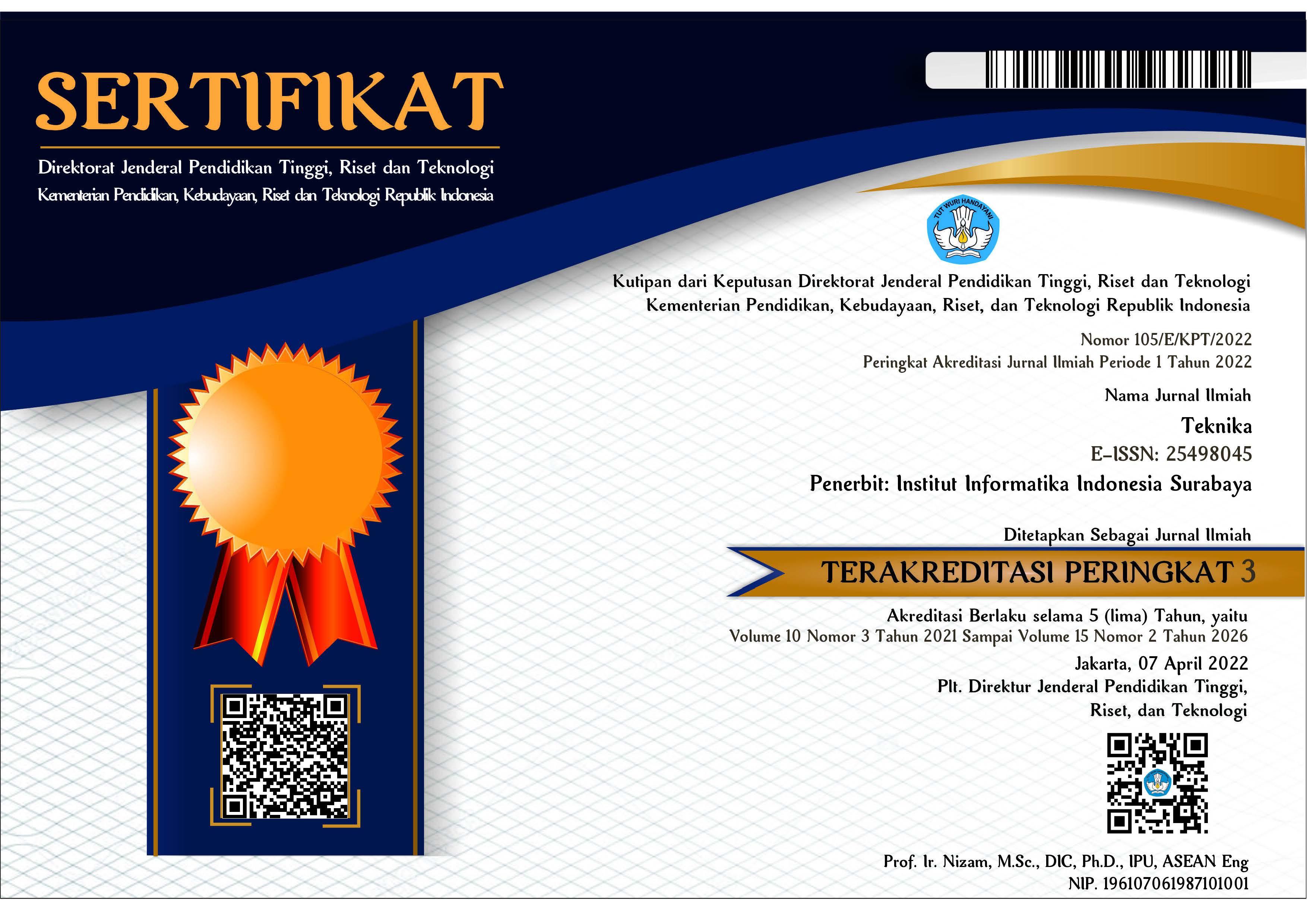Analisis Faktor-Faktor Yang Memengaruhi Konsumen Indonesia Membeli Produk Pakaian Pada Aplikasi E-commerce Indonesia Menggunakan Model UTAUT-2
Abstract
Penjualan produk fesyen pada e-commerce di Indonesia mengalami perkembangan pesat saat ini. Salah satu model yang banyak digunakan untuk penerimaan masyarakat adalah model Unified Theory of Acceptance and Use of Technology (UTAUT). Tujuan dari penelitian ini adalah mengetahui faktor-faktor yang memengaruhi masyarakat Indonesia ketika membeli produk fesyen pada e-commerce dengan menggunakan analisis model UTAUT-2. Penelitian ini mampu untuk membantu penjual produk fesyen untuk lebih memahami konsumen e-commerce di Indonesia. Penelitian kuantitatif yang menyebarkan kuesioner melalui daring dan mendapatkan 302 responden. Structural Equation Model-Partial Least Square digunakan dalam penelitian ini untuk mendapatkan hasil hipotesis. Uji yang dilakukan menggunakan 2 tahap yaitu measurement model dan structural model. Hasil penelitian menunjukan bahwa harapan kinerja, pengaruh sosial, harga, dan kebiasaan memiliki pengaruh yang signifikan dan positif terhadap keputusan pembelian seseorang. Sedangkan harapan usaha, kondisi fasilitas, dan motivasi hedon tidak memiki pengaruh yang signifikan terhadap keputusan pembelian produk fesyen pada aplikasi e-commerce. Kebiasaan menjadi bagian yang paling penting dalam memengaruhi konsumen Indonesia untuk membeli produk fesyen pada aplikasi e-commerce di Indonesia. Pengaruh sosial merupakan faktor kedua yang memengaruhi keputusan pembelian diikuti dengan harga dan harapan kinerja.
Downloads
References
Okezone, “Belanja online Makin Digemari, e-commerce tumbuh 40% di 2021 : Okezone Economy,” https://economy.okezone.com/, 21-Jan-2022. [Online]. Available: https://economy.okezone.com/read/2022/01/21/455/2535696/belanja-online-makin-digemari-e-commerce-tumbuh-40-di-2021. [Accessed: 08-Jul-2022].
“Fashion - indonesia: Statista market forecast,” Statista. [Online]. Available: https://www.statista.com/outlook/dmo/ecommerce/fashion/indonesia#revenue. [Accessed: 08-Jul-2022].
E. Sumarliah, K. Usmanova, K. Mousa, and I. Indriya, “E-commerce in the fashion business: The roles of the COVID-19 situational factors, hedonic and utilitarian motives on consumers’ intention to purchase online,” International Journal of Fashion Design, Technology and Education, vol. 15, no. 2, pp. 167—177, 2021.
Y. Kartikasari, S. Sunaryo, and A. Yuniarinto, “The intention to use e-commerce to purchase green cosmetics with a modified UTAUT2 approach,” Jurnal Aplikasi Manajemen, vol. 19, no. 3, pp. 605—615, 2021.
J. Erjavec and A. Manfreda, “Online shopping adoption during COVID-19 and social isolation: Extending the UTAUT model with herd behavior,” Journal of Retailing and Consumer Services, vol. 65, p. 102867, 2022.
P. Tak and S. Panwar, “Using utaut 2 model to predict mobile app based shopping: Evidences from India,” Journal of Indian Business Research, vol. 9, no. 3, pp. 248—264, 2017.
M. S. Hanif, M. Wang, M. U. Mumtaz, Z. Ahmed, and W. Zaki, “What attracts me or prevents me from mobile shopping? an adapted UTAUT2 model empirical research on behavioral intentions of aspirant young consumers in Pakistan,” Asia Pacific Journal of Marketing and Logistics, vol. 34, no. 5, pp. 1031—1059, 2021.
Y. Liang, S.-H. Lee, and J. E. Workman, “How do consumers perceive mobile self-checkout in fashion retail stores?,” International Journal of Retail & Distribution Management, vol. 50, no. 6, pp. 677—691, 2021.
P. Y. Soh, H. B. Heng, G. Selvachandran, L. Q. Anh, H. T. Chau, L. H. Son, M. Abdel-Baset, G. Manogaran, and R. Varatharajan, “Perception, acceptance and willingness of older adults in Malaysia towards online shopping: A study using the UTAUT and IRT Models,” Journal of Ambient Intelligence and Humanized Computing, 2020.
V. Venkatesh, M. G. Morris, G. B. Davis, and F. D. Davis, “User acceptance of information technology: Toward a unified view,” MIS Quarterly, vol. 27, no. 3, pp. 425—478 , 2003.
V. Venkatesh, J. Y. L. Thong, and X. Xu, “Consumer acceptance and use of information technology: Extending the unified theory of acceptance and use of Technology,” MIS Quarterly, vol. 36, no. 1, pp. 157—178 , 2012.
A. Gupta, N. Dogra, and B. George, “What determines tourist adoption of smartphone apps?,” Journal of Hospitality and Tourism Technology, vol. 9, no. 1, pp. 50—64, 2018.
F. J. Pascual-Miguel, Ã. F. Agudo-Peregrina, and J. Chaparro-Peláez, “Influences of gender and product type on online purchasing,” Journal of Business Research, vol. 68, no. 7, pp. 1550—1556, 2015.
C. K. Dewi, Z. Mohaidin, and M. A. Murshid, “Determinants of Online Purchase Intention: A PLS-SEM approach: Evidence from Indonesia,” Journal of Asia Business Studies, vol. 14, no. 3, pp. 281—306, 2019.
L. Chen, M. S. Rashidin, F. Song, Y. Wang, S. Javed, and J. Wang, “Determinants of consumer’s purchase intention on fresh e-commerce platform: Perspective of Utaut Model,” SAGE Open, vol. 11, no. 2, p. 215824402110278, 2021.
R. Chitturi, R. Raghunathan, and V. Mahajan, “Delight by design: The role of hedonic versus utilitarian benefits,” Journal of Marketing, vol. 72, no. 3, pp. 48—63, 2008.
J. F. Hair, J. J. Risher, M. Sarstedt, and C. M. Ringle, “When to use and how to report the results of PLS-SEM,” European Business Review, vol. 31, no. 1, pp. 2—24, 2019.
K. Nikolopoulou, V. Gialamas, and K. Lavidas, “Habit, hedonic motivation, performance expectancy and technological pedagogical knowledge affect teachers’ intention to use mobile internet,” Computers and Education Open, vol. 2, p. 100041, 2021.
S. Sharma, G. Singh, S. Pratt, and J. Narayan, “Exploring consumer behavior to purchase travel online in Fiji and Solomon Islands? an extension of the UTAUT framework,” International Journal of Culture, Tourism and Hospitality Research, vol. 15, no. 2, pp. 227—247, 2020.

Copyright (c) 2023 Teknika

This work is licensed under a Creative Commons Attribution-ShareAlike 4.0 International License.






















